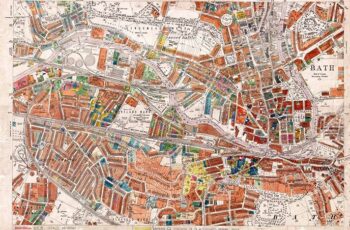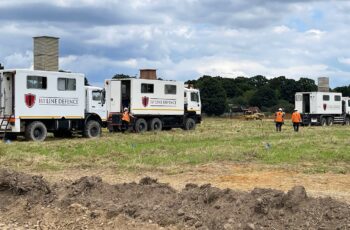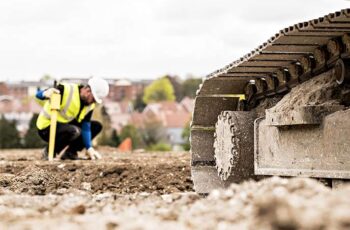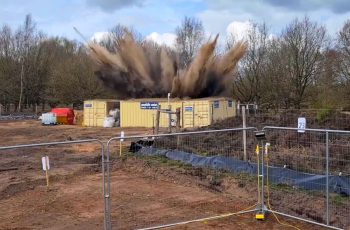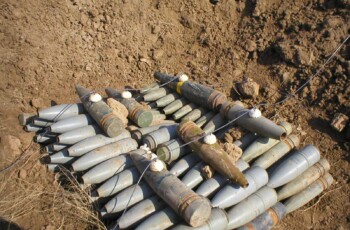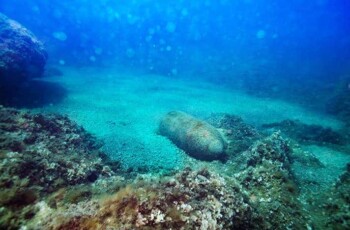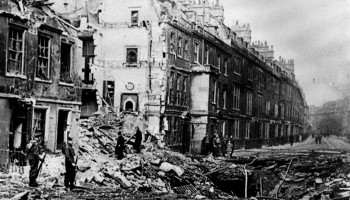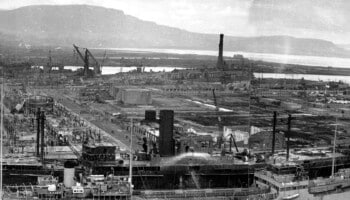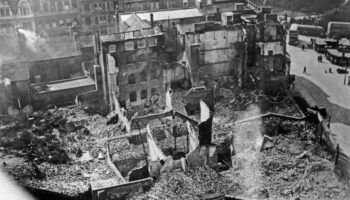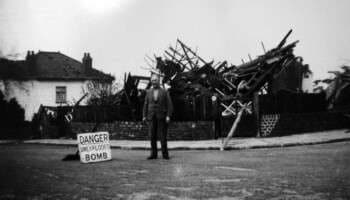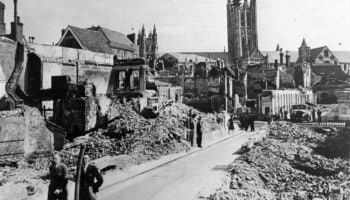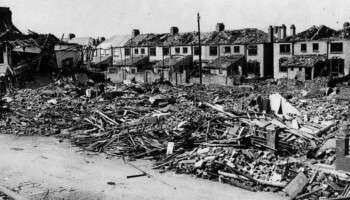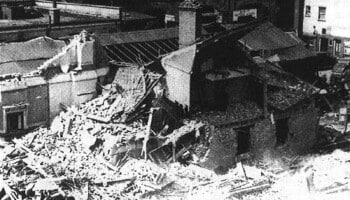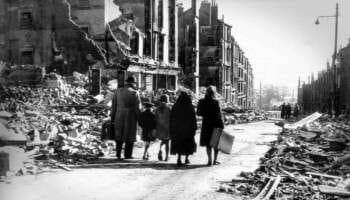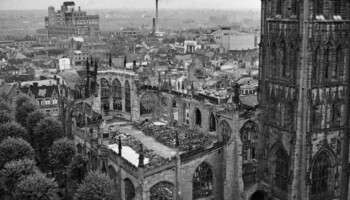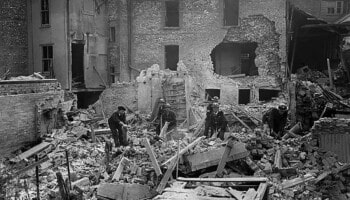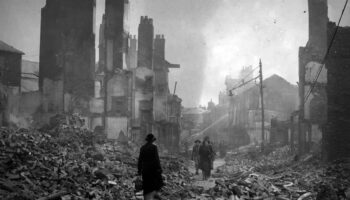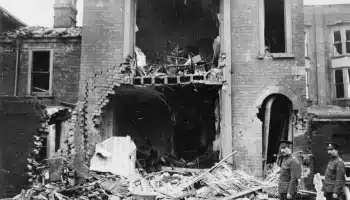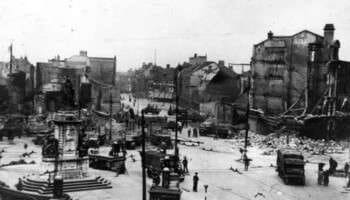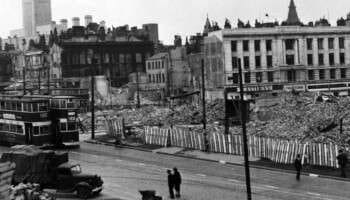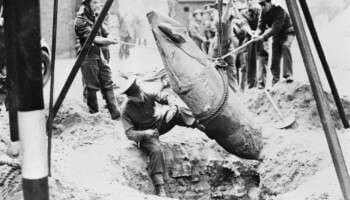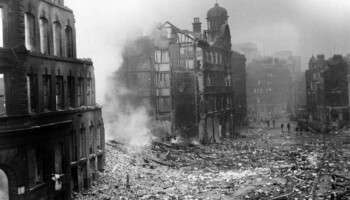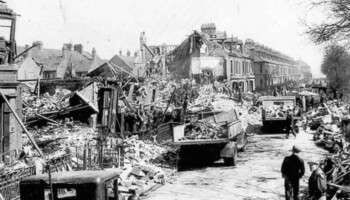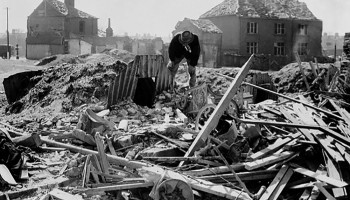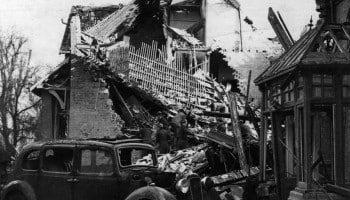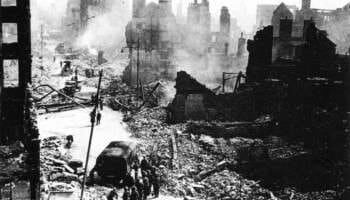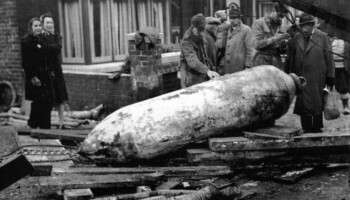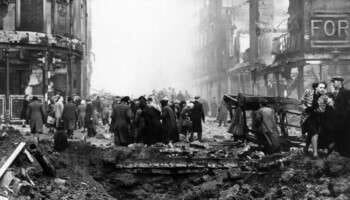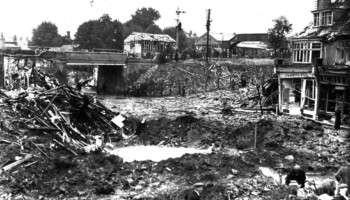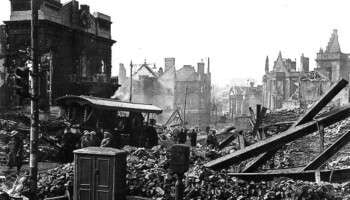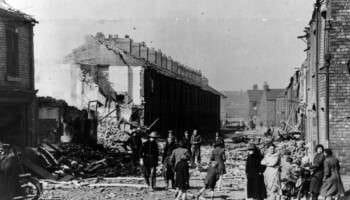Home » Resources » UXO City Guides »
UXO City Guide
Home Office Bombing Statistics for Brighton
Record of German Ordnance dropped on the County Borough of Brighton
High Explosive Bombs (All types)
346
Parachute Mines
0
Oil Bombs
6
Phosphorus Bombs
10
Fire Pots
5
Pilotless Aircraft (V-1)
0
Long-range Rocket Bombs (V-2)
0
Weapons Total
367
Area Acreage
12,503
Number of items per 1,000 acres
29.4
Why was Brighton targeted and bombed in WWII?
Brighton did not contain the industrial infrastructure to make it a city of strategic importance, compared to cities like London and Birmingham. Despite this, it was still targeted by the Luftwaffe during WWII, especially from 1941 onwards. Due to the lack of significant industrial targets within Brighton, most of the bombing targeted residential and cultural areas, in order to damage the morale of the civilian population. By the end of the war, Brighton had sustained 227 civilian casualties, with a further 510 seriously injured1.
Although Brighton itself contained no significant infrastructure to target, several Luftwaffe targets were present along this stretch of the south coast, such as Shoreham-by-Sea harbour and Portslade Power Station to the west of Brighton. As such, it is likely that unplanned bombing of Brighton occurred due to Luftwaffe pilots, who had targeted Shoreham and Portslade, jettisoning any remaining bombs before returning to mainland Europe.
Home Office Bombing Statistics for Brighton
Details recorded by official Home Office bombing statistics, indicates the quantity and type of bombs that fell on the County Borough of Brighton during WWII (excluding Incendiary Bombs). A total of 367 bombs were recorded, equating to 29.4 items of ordnance per 1,000 acres.
Major bombing raids in Brighton
Over 80 air raids were recorded in Brighton between July 1940 and February 19442. As the city was not home to any significant industrial facilities, it was not primarily a Luftwaffe target at the beginning of the war, and as such the most devastating raids occurred from 1941 onwards. However, the worst raid in terms of casualties occurred on 14th September 1940. A retreating German Dornier bomber jettisoned 20 HE bombs across the residential area of Kemp Town, including two which fell at the Odeon cinema3. The bombs at the cinema resulted in the deaths of 52 people, including several children, and caused significant damage to the cinema building.
One of the town’s worst raids took place during the night of 8th-9th April 1941. This raid targeted the residential area of Norfolk Square, causing widespread damage. 10 people were killed and many more were injured, including a mother and daughter who were pulled from a collapsed building after 60 hours4.
The most devastating raid in terms of damage occurred on 25th March 1943. A squadron of 24 Focke Wulfe 190 fighter-bombers targeted the town, dropping 23 500kg HE bombs across the city. The raid killed 24 people and injured 130, however it also destroyed around 150 homes and damaged key infrastructure, such as the Black Rock Gasworks and the London Road Viaduct5. The later occurred when a bomb bounced off the road and exploded at the bottom of the viaduct, destroying the supporting pier and two arches. This left the railway line atop the viaduct suspended in the air, and train service was not back to normal for a month6.
It is claimed that during WWII, the Royal Pavilion was designated by Hitler as a potential headquarters following a German occupation of Britain, and Luftwaffe pilots were therefore instructed not to bomb the building7. However, this has never been proven by any official source, and is likely not true as several bombs fell in close proximity to the Pavilion, including one bomb that fell in the gardens and resulted in minor superficial damage to the historic structure8.
Military Activity in the South Downs
During both WWI and WWII, the area to the north of Brighton saw significant Allied military activity. Devil’s Dyke, situated approximately 7km north-west from the centre of Brighton, was used as a munitions research ground during WWI, with the valley utilised as an area to suspend and test bombs9.
This location was requisitioned by the military for a second time during WWII, used by Canadian Troops as a training area in preparation for D-Day. In fact, this was a common story across the South Downs, with much of the land being used to hold thousands of soldiers before they were deployed into Europe.
Although large numbers of British and American soldiers were stationed across Sussex, the largest proportion was that of Canadian troops, with over 300,000 Canadian soldiers believed to have been residing within the county during WWII10. Training exercises took place involving tanks and artillery, and substantial stockpiles of ammunition were present.
A specific location of substantial military activity was Stanmer Park, now partly occupied by the University of Sussex campus. The Stanmer Estate was requisitioned by the War Department in November 1942 as a Battle Training Area, conducting battle simulations and exercises, and saw the use of grenades, mortars, machine guns and tanks11. Subsequently, the Estate was also used as a marshalling camp in the build-up to Operation Overlord, the invasion of Normandy by Allied forces.
This military presence would have seen the use of live ordnance and weapons, increasing the risk of potential UXO contamination in the area. Somewhat unsurprisingly, many items of ordnance have been found across the South Downs since the end of WWII.
Estate Logs for Stanmer Park state that two hand grenades were discovered at the estate in January 1950, and a further 11 items of live ordnance were discovered at the northern end of the current University campus during an Explosive Ordnance Clearance (EOC) task in March 1954.
Many EOC tasks have been carried out across the South Downs in subsequent years, with some finding upwards of 1,700 items of live ordnance.
Can UXO still pose a risk to construction projects in Brighton?
The primary potential risk from UXO in Brighton is from items of German air-delivered ordnance which failed to function as designed.
Approximately 10% of munitions deployed during WWII failed to detonate, and whilst efforts were made during, and after the war to locate and make UXBs safe, not all items were discovered. This is evidenced by the regular, on-going discoveries of UXO during construction-related intrusive ground works across the UK – not just in Brighton.
I am about to start a project in Brighton, what should I do?
Developers and ground workers should consider this potential before intrusive works are planned, through either a Preliminary UXO Risk Assessment or Detailed UXO Risk Assessment. This is the first stage in our UXO risk mitigation strategy and should be undertaken as early in a project lifecycle as possible in accordance with CIRIA C681 guidelines.
It is important that where a viable risk is identified, it is effectively and appropriately mitigated to reduce the risk to as low as reasonably practicable (ALARP). However, it is equally important that UXO risk mitigation measures are not implemented when they are not needed.
While there is certainly potential to encounter UXO during construction projects in Brighton, it does not mean that UXO will pose a risk to all projects. Just because a site is located in Brighton does not mean there is automatically a ‘high’ risk of encountering UXO. It really does depend on the specific location of the site being developed.
A well-researched UXO Risk Assessment will take into account location specific factors – was the actual site footprint affected by bombing, what damage was sustained, what was the site used for, how much would it have been accessed, what were the ground conditions present etc.
It should also consider what has happened post-war – how much development has occurred, to what depths have excavations taken place and so on. This will allow an assessment of the likelihood that UXO could have fallen on site, gone unnoticed and potentially still remain in situ.
Sources
1https://www.theargus.co.uk/news/nostalgia/brightonandhoveatwar/bombmap/
2https://ww2.brightonmuseums.org/attacks-from-the-air/
3https://ww2.brightonmuseums.org/looking-forwards-reflecting-back/brightons-deadliest-bombing-raid-of-ww2/
4Burgess, Pat and Saunders, Andy., Blitz Over Sussex 1941-42, Middleton Press (1994)
5https://web.archive.org/web/20151107033706/
6Cooper, B.K., “Appendix 2: Brighton under Fire”, Rail Centres: Brighton, Shepperton, Ian Allan Ltd (1991)
7https://www.twingrouptravel.com/attractions/royal-pavilion-brighton
8https://www.mybrightonandhove.org.uk/topics/topicwar/wartime-memories/memories-of-wwii-14
9https://www.southdowns.gov.uk/lest-forget-compelling-wartime-story-south-downs/
10https://merrynallingham.com/20th-century/sussex-in-world-war-two/
11https://www.bbc.co.uk/history/ww2peopleswar/stories/64/a2427464.shtml
Recent UXO discoveries in Brighton
Since the war, many items of UXO have been discovered across multiple cities within the UK, with Brighton no exception. See the news articles below about UXO incidents and discoveries from national and local press in Brighton.
1st Line Defence keep up-to-date with relevant and noteworthy UXO-related news stories reported across the UK, and you can browse through these articles using the buttons below.
Get UXO risk mitigation services from a partner you can trust
UXO City Guides
Got a project in Brighton? Need advice but not sure where to start?
If you need general advice about UXO risk mitigation in Brighton, contact us and we will be happy to help.
Contact Us
* indicates required fields
